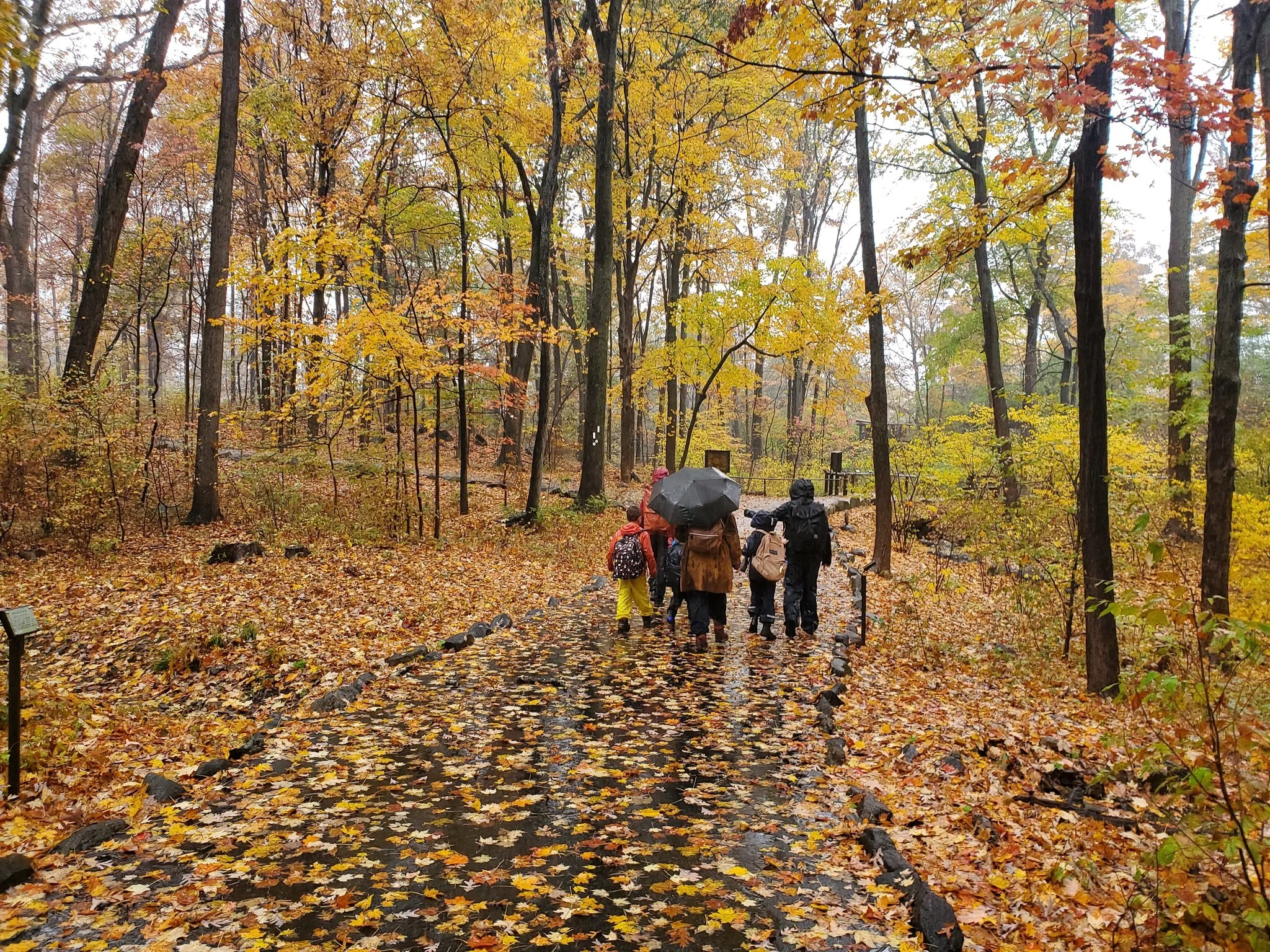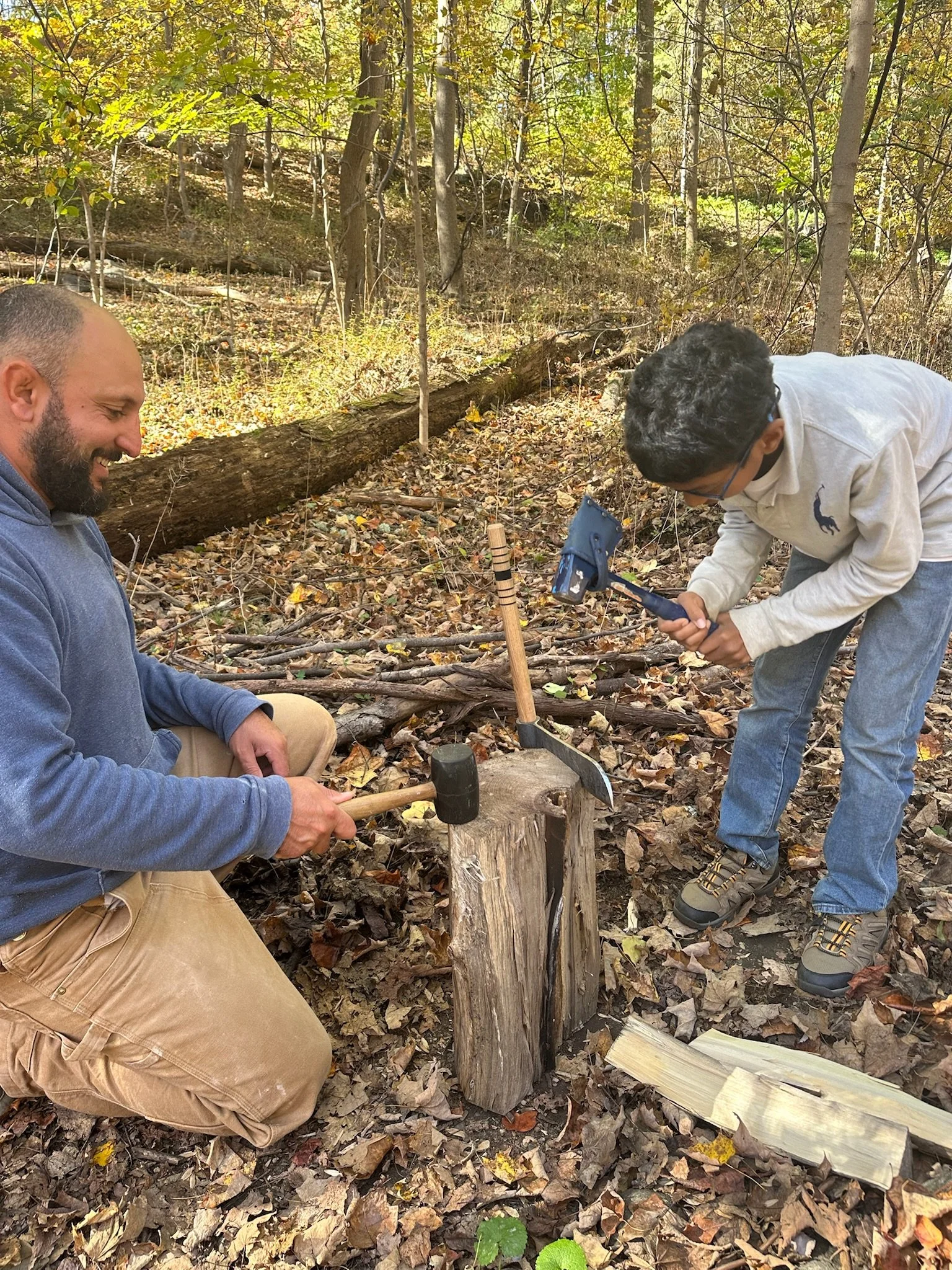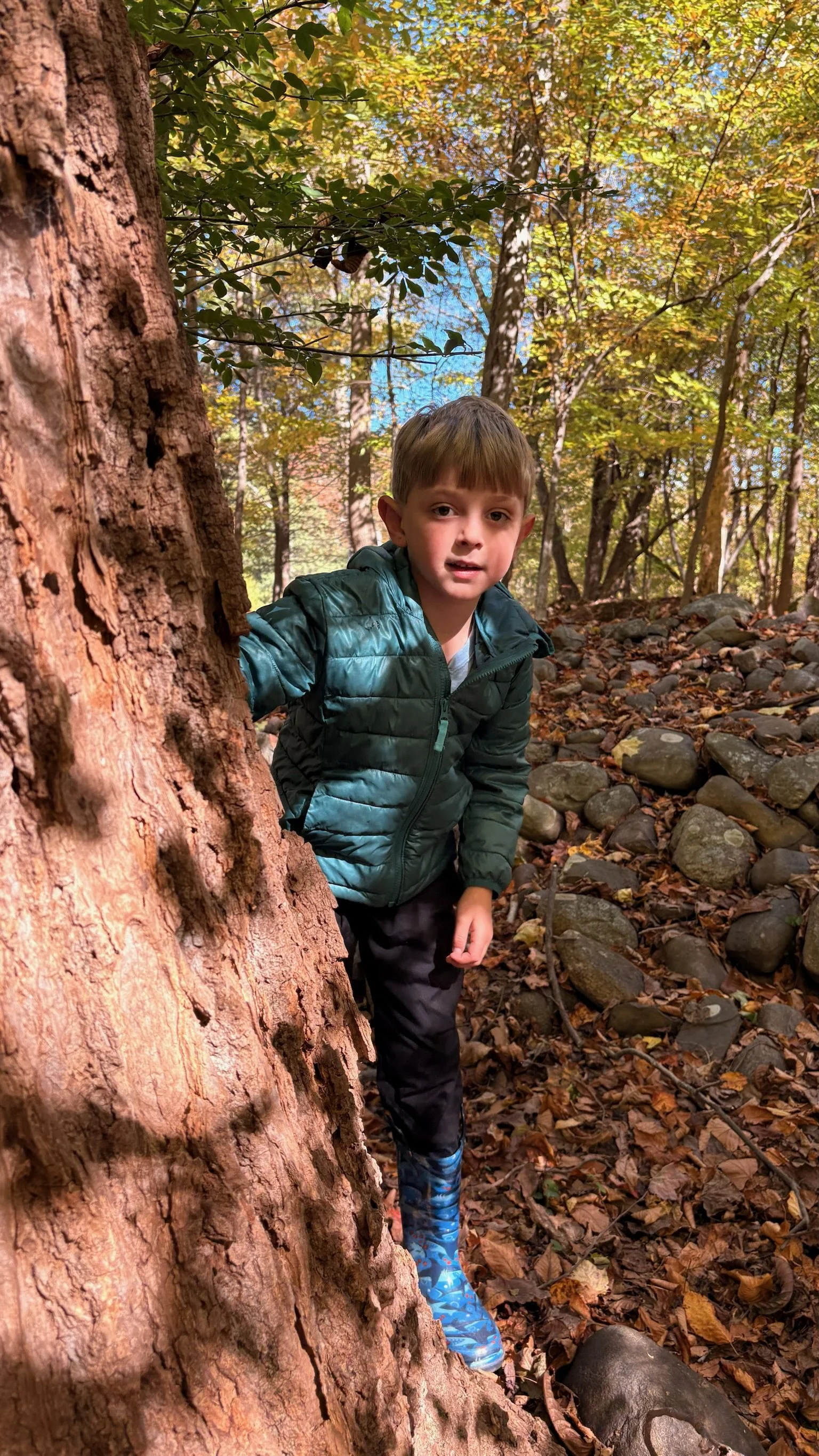Can We Go into the Wild?
In the 12th and final lecture of the Curative Education Course, Rudolf Steiner emphasized the intrinsic link between education and healing:
“having a more intimate and deep perception of how it is only in the course of life that man comes into this condition of balance, of how he needs indeed to be brought into it by means of education, these men of an older time saw that there is something definitely abnormal about a child as such, something in every child that is in a certain respect ill and requires to be healed. Hence the primeval words for “healing” and “educating” have the very same significance. Education heals the so-called normal human being, and healing is a specialized form of education for the so-called abnormal human being.” (p.143).
Even though this lecture was given over 100 years ago, we can experience how it holds true and it is being asked of us that we help to accomplish this for the children who are present in our classroom today. This perennial question needs to be answered in a way that can give meaning to our modern, sometimes mundane sense of the world. Education is a path of discovery which leads us to recognizing the spiritual nature of the other person and thus to our own individual biography. By reflecting on this, we can bring about enormous social change and healing forces to an age that is losing sense of this fundamental connection. We are invited into a new paradigm by seeing that healing is not one end of a polarity, but rather that it is the fulcrum on which opposites need to find harmony.
As we begin to take steps on this path of discovery, there is a need for orientation so that the wilderness which we find ourselves in can start to become recognizable and that we are not lost along the way. One such tool is echoed in the nursery rhyme of “Twinkle, Twinkle”. We hear that from the starry heavens, a guide can be seen which can provide a means of direction. Our “North Star” is the “red thread” of our life and when we come to know this, we feel it as a sense of wonder, beauty and guidance. A shining light in the dark woods of the soul that reminds us that we may be feeling lost but this sojourn that we find ourselves on is what we chose.
Looking at the biography of the students, we can gleam that there is a map being created and one in which a divine hand is playing a role. Seemingly insignificant moments begin to form contours, boundaries, and directions which lead the human being to a definite place in space and time. We find that “in the course of life” this path is being created each moment. A wonderful discovery for educators to recognize that a child in our care is coming with qualities from the past that are looking to find balance, if we are able to see these challenges as areas of potential gifts which are seeking transformation. Rudolf Steiner wrote a verse for Dr. Ita Wegman for those working in Curative Education and it begins with the lines: "The Human Being is a bridge between the past and future existence..” ( n.d.). In this invocation, we are invited to see that the present moment is the crucible in which harmony is seeking balance and the cultivation of this can become a high art, as education can be harmonized as a means of healing.
In this wilderness, another means to find orientation is the recognition of “landmarks”. These landmarks are the milestones we witness around the world as child development unfolds. A few gifts of being human is that we are able to stand upright and walk towards the end our first year of life, to speak and give expression through the Word in our second year of life, and to have thoughts which strive towards being freed from prejudices that resound in the sense of “I” in the third year of life. In children who are on a unique path of development, sometimes referred to as “neurodiverse,” we see that in the first three years of life, these gifts have difficulty coming to expression and are the foundation on which further capacities are built (Steiner, 2014a).
As a class teacher, I see the importance and health giving experience of spending time in the natural world. Whether in the woods, the swamp, the fields, the stream or at the farm, these places have so much to offer as a means of teaching and healing. The other day a student of mine asked me “How did this trail get here?”. I responded, without much hesitation, that “ this path was made by those who walked it before us”. This simple answer, spoken with reverence and love was enough to invite smiles, a sense of peace and belonging in the present moment.
Dr. Karl Konig, the founder of the Camphill Movement shares in an amazing verse that:
There is a knighthood of the 21st century
Whose riders do not ride through the darkness of physical forests, as
Of old, but through the forest of darkened minds.
They are armed with a spiritual armor,
And an inner sun makes them radiant.
Out of them shines healing,
Healing that flows from the knowledge of the human being as a
Spiritual being.
They must create inner order, inner justice,
Peace, and conviction in the darkness of our time.
They must learn to work side by side with angels.”
(Konig, n.d.)
The children of the 21st century are facing a future that is unfathomable to the adults who surround them. We can do our best to intuit what might be helpful as knowledge, skill and experience, but ultimately, they are left free to decide how and what they will do when they are faced with personal and collective adversity. The imagination of “canary in the coalmine” can stir feelings of concern that the behaviors we see coming from children today are really them asking their guardians, that we are awake to what is happening in our environment, both physical and non-physical. The destruction of the natural world, habitats and breakdown of ecosystems vital to the health of the planet are all symptoms of a much larger problem. That the human being can’t find their way any longer or to be more exact that a new way must be sought and that our current means of ascertaining what needs to happen requires active courage and creativity.
One of the essentials brought in the world of early childhood is relating to the process of time with meaningful activity. A dear teacher of mine, Nancy Blanning stresses that “ children need to do real things, in real time with real people” (N. Blanning, personal communication, n.d.) It might seem overstressed but when we look at how often children spend time on screens, we are faced with an uncomfortable reality which is a new problem for children living in this age. How we are to find “this condition of balance..needs indeed to be brought into by means of education” and in a way that addresses modern concerns and lifestyles. By walking the same trail through the seasons, one can actually experiences how the stream fills with leaves during the fall and needs cleaning, how in the winter the stream freezes and can be walked upon, in the spring it thaws out and begins to fill and brim with life and in the summer can be a refreshing experience to cool oneself from the heat of the day.
Modern researchers have even given a name to spending time in nature which can be given a quantitative explanation as expressed by the name of “forest bathing”. In his book Forest Bathing: How Trees Can Help You Find Health and Happiness” Dr. Qi Li stated (Li, 2018) that “ forest bathing can reduce your stress levels and blood pressure, strengthen your immune and cardiovascular systems, boost your energy, mood, creativity, and concentration, and even help you lose weight and live longer.” Comparing this with screen time use. Children’s Hospital of Orange County shares that “For them (preteens and teens), more screen time can be associated with higher anxiety, depression symptoms, lower quality of life, lower psychological well-being, lower school functioning, lower academic achievement, lower self-esteem, poor language achievement, and poor math achievement” (Children’s Hospital of Orange County, 2024). It goes without saying that we can clearly see the benefits of spending time in nature and the detrimental effects of screen time. I would suggest that a balancing gesture between these two would be to have meaningful learning experiences in nature about nature. Exploring the open secret presented in the script of the bark, leaves and bird songs.
The title of this paper comes from a question posed to me by one of my students. He will often ask me “ Can we go into the Wild?”. For me, there is a deeper layer to this question as it is subtly asked that we do this together. It's not for me or him alone, but rather that we take up this journey. A question resounds from this generation and is communicated with wisdom “from the mouth of babes” as a deep need and one of collaboration. That “healing is a specialised form of education for the so-called abnormal human being” is a state that many children are presenting in this age.
We are even given a description of this in the language used as we describe “Autism Spectrum Disorder”. An imagination of a rainbow with its variety, beauty, and distinction can be created as we witness this phenomena as an effect created by the sense “that is in a certain respect ill and requires to be healed.”. I would say that in this context the world at large is needing to find balance so that the extreme qualities found in the polarization between self and world, self and other, past and future can find balance and healing. A further exploration can be taken up as we see the relationship between the archetype and the individual.
The fact that autism presents with an increased frequency and still holds true to its individual expression and relationship, asks the world to begin attempting to harmonize apparent opposites. I would add further that children on the spectrum are agents of social change and this can be reinforced by the direct and obvious need to form a different relationship with the world. Some of the challenges for these individuals are sensory based, socially oriented, and immune-compromised. Can we not see that the world has become noisy, too bright as the stars themselves have to battle with light pollution and even overwhelming in the sense that the human being needs to carve out a place for peace and quiet? The social sphere is increasingly becoming fractured, hierarchical, and foreign to face to face interactions. Food deserts are recognized and given a concept, allergies are increasing and a resurgence for community gardens and regenerative organic farming practices are all on the rise.
Within this wilderness of the 21st century, there is a light appearing on the horizon and new stars are beginning to shine as these human individuals are coming to earth. Bringing with them questions which can inspire positive change and transformation. We can witness how this appears on the historical record in the year 1604, when Johannes Kepler observed a new star in the night sky (Uri, 2024). The apparent death of a star going supernova in fact brings about the birth of something new. “These men of an older time saw that there is something..” which is making itself known today and will have a major impact on everything that is to follow.
In the age when we know more about the surface of the moon than we do about the ocean floor of the Earth, we must remain humble in our approach and open to that which appears “abnormal”. This seemingly atypical expression is a blessing of the highest magnitude. Rudolf Steiner gave a verse to the new faculty of teachers before the opening of the first Waldorf school in 1919. He spoke these words prophetically, knowing that the teachers of these new generations would need to practice a level of self-education so that they could help herald in the future that is waiting to be born. May we bring these words to life in our hearts and do so with the hope that can “Imbue thyself with the power of imagination. Have courage for the truth. Sharpen thy feeling for responsibility of soul” (Steiner, 2004b).
References
Children’s Hospital of Orange County. (2024, August 27). The effects of screen time on children: The latest research parents should know. CHOC Children’s Health Hub. https://www.choc.org/news/the-effects-of-screen-time-on-children-the-latest-research-parents-should-know/
Konig, K. (n.d.). [Untitled verse]. Unpublished manuscript.
Li, Q. (2018). Forest bathing: How trees can help you find health and happiness. Viking.
Steiner, R. (2004b). Study of man: General education course. Rudolf Steiner Press.
Steiner, R. (2014a). Education for special needs: The curative education course. Rudolf Steiner Press.
Steiner, R. (n.d.). [Verse for curative education]. Unpublished manuscript.
Uri, J. (2024, October 9). 420 years ago: Astronomer Johannes Kepler observes a supernova. NASA.https://www.nasa.gov/history/420-years-ago-astronomer-johannes-kepler-observes-a-supernova/




